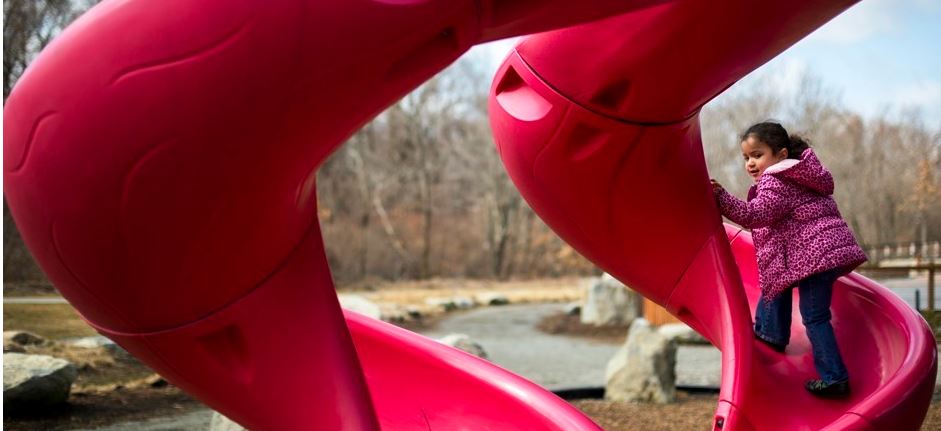
Neighborhood green spaces aren’t always living up to their full potential.
Parks seem like an ideal place for Americans to meet the national recommendations for physical activity (an hour a day for youth and a 150 minutes a week for adults). But because neighborhood parks are rarely designed with urban health in mind, these spaces—which the study defines as anywhere from two to 20 acres—often don’t fulfill their potential as pieces of public health infrastructure. A new study by researchers from the RAND Corporation, City Parks Alliance, and The Trust for Public Land is offering some solutions.
Researchers analyzed 175 neighborhood parks in 25 major Americancities. From 2014 to 2016 they observed park use, park-based physical activity, and park conditions, as well as the way users felt about their local parks. The study points to tangible ways that cities can encourage residents to use parks more in general, and for physical activity in particular. Among those recommendations: better facilities, targeted programing, and more marketing.
Park usage varies based on different factors such as age, gender, and socioeconomic status. Poorer communities are less likely to be frequent visitors: In the study, a 10 percentage point increase in local household poverty correlated with a 12 percent decrease in park use. Research also shows that most parks are geared toward youth rather than adults. Nearly all of the parks in the study had outdoor basketball courts and baseball fields, but only a third had a walking loop. When they were present, these loops were the amenity that generated the most activity for adults and seniors. Researchers found that park usage skewed male (57 percent) and young—seniors represented only 4 percent of park visitors. However, seniors make up 20 percent of the general U.S. population; a marked effort at engaging them would increase overall park usage and likely help to make the demographic healthier.

Targeted programming is key, says Catherine Nagle, the executive director of City Parks Alliance. Parks need to “provide professional staff to organize more programming locally that serves the needs of that particular neighborhood,” she says. Nagle observes that communities with young families sometimes want yoga classes for mothers and infants, while those with older or immigrant populations may have different needs. Additionally, supervised activities, such as dog training, increased average park use by 48 percent. Yet more than half of the parks surveyed had no supervised programming at all.
One of the largest barriers to building better park infrastructure and programs is budget. Out of the 119 park administrators surveyed in the study, half said their parks had gone through budget and staff decreases in the past two years. These budget shortfalls—and the ensuing decline in park hours and facilities—become a spiral.
Nagel believes there are ways to work around a lack of funding, largely by leveraging the resources of private companies, nonprofits, and other city agencies. She recommends that parks explore working with community health centers and hospitals to connect “physical spaces with health providers and insurance companies—the entities that are taking care of our health needs but not on the preventative sides.” Nagel cites the success of public-private partnerships like the one between the Los Angeles Parks and Recreation department and the nonprofit Los Angeles Parks Foundation. Working in tandem, the organizations have created neighborhood parks in underserved neighborhoods.
“Parks have an unrealized potential to improve everyone’s quality of life and longevity, and that’s been too neglected,” says Cohen. “We need to focus more on these wonderful community assets.”
